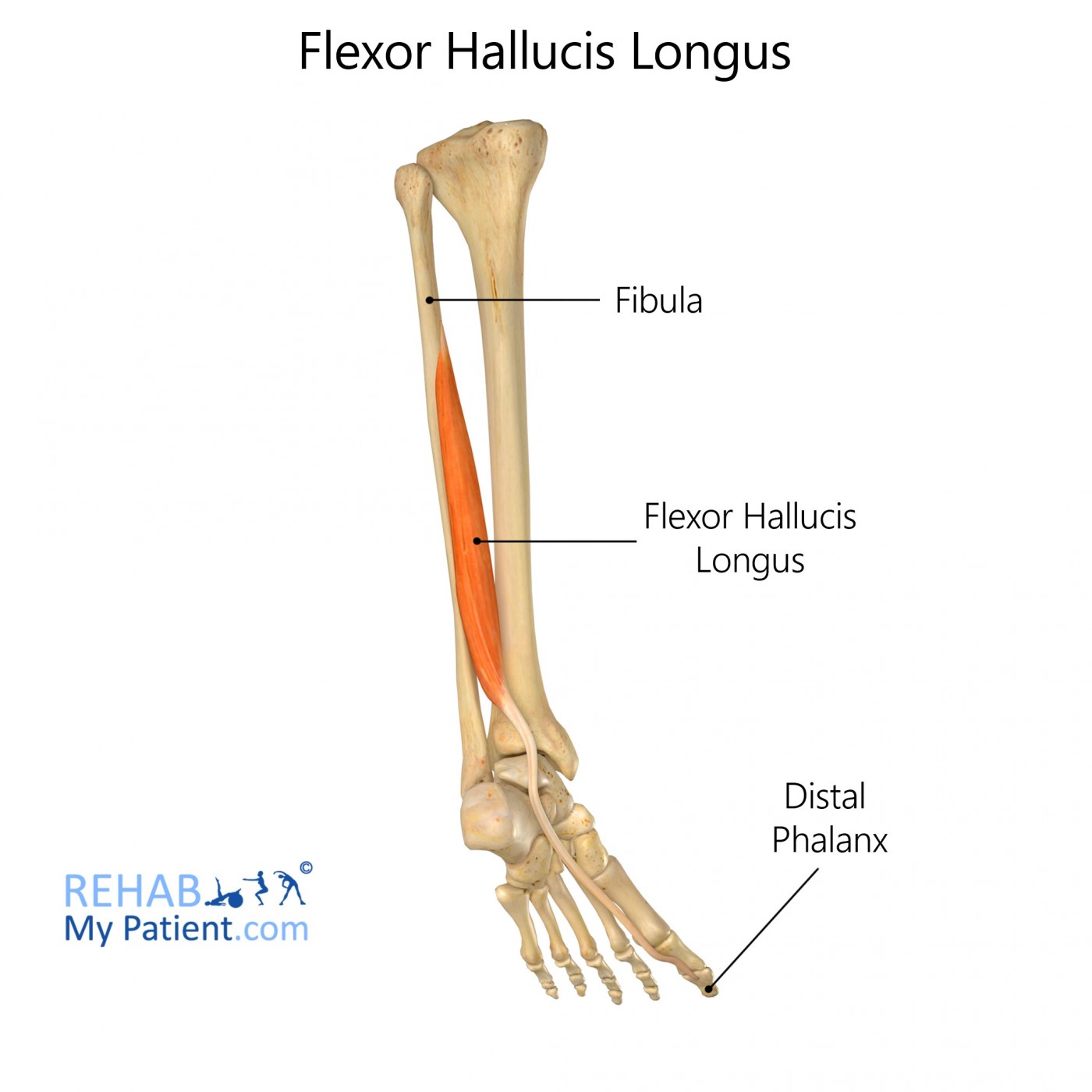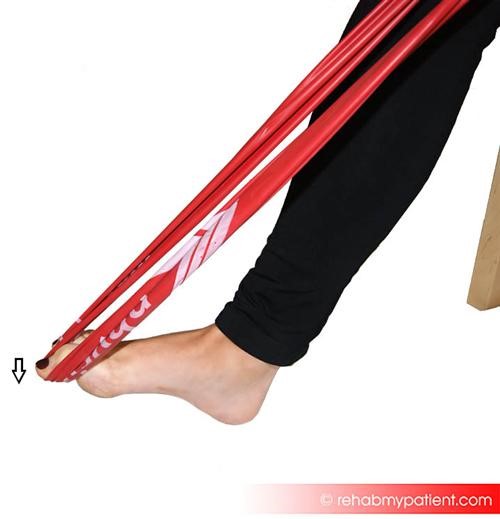
General information
Flexor hallucis longus is one of the muscles of the leg situated deep in the posterior compartment.
Literal meaning
The long muscle that flexes (bends) the big toe.
Interesting information
Flexor hallucis longus is essential in allowing the big toe to grip, which makes walking and running on uneven or rough surfaces possible. Even on smooth surfaces, flexor hallucis longus is responsible for pushing off from the ground when walking. This muscle also provides considerable support for the longitudinal arch of the foot.
Flexor hallucis longus disorders may be misdiagnosed as conditions with similar presentations such as plantar fasciitis. The tendon of this muscle travels under the foot and leads to the big toe. On its course it must pass by the sustentaculum tali. Injury or irritation to flexor hallucis longus can occur when there is too much friction between the muscle tendon and this bony structure.
Anatomical anomalies in flexor hallucis longus can account for some rare cases of muscle dysfunction. For instance, patients complaining of flexor hallucis longus pain have very occasionally been found to have an accessory flexor hallucis longus muscle. This accessory muscle was responsible for the irritation and resulting pain.
The vast majority of flexor hallucis longus injuries are due to persistent muscle strain and irritation. Due to the sustained and difficult foot positions required of ballet dancers, they commonly suffer from these types of injuries. Runners can also be affected.
Origin
Fibula (posterior, lower 2/3).
Insertion
Base of the terminal phalanx of the big toe (plantar surface).
Function
Flexes the hallux (big toe) and also aids in ankle joint plantar flexion.
Nerve supply
Tibial nerve (L5, S1, S2)
Blood supply
Peroneal artery

Relevant research
Stenosing tenosynovitis is a painful and debilitating condition caused by chronic inflammation of the flexor hallucis longus muscle. This study examines the condition in a runner who was found to exhibit an anomalous flexor hallucis longus. Examination of the anomaly provided important insight into treatment of stenosing tenosynovitis.
Theodore GH, Kolettis GJ, Micheli LJ (1996). “Tenosynovitis of the flexor hallucis longus in a long-distance runner”. Med Sci Sports Exerc. 28(3):277-9.
This study investigated a clinical case of stenosing tenosynovitis which occurred at the sesamoid area, a presentation largely neglected in the previous literature. The author indicates that early diagnosis of the condition is crucial for successful treatment.
José Antônio Veiga Sanhudo (2006). “Stenosing Tenosynovitis of the Flexor Hallucis Longus Tendon at the Sesamoid Area”. Foot and Ankle International. Copyright © 2006 by The American Orthopaedic Foot & Ankle Society, Inc.
Flexor Hallucis Longus (leg) exercises
This exercise for flexor hallucis longus requires the use of a resistance band or a similar tool. Sit with your foot extended in front of you. The ankle of your foot should be comfortably flexed. Place the resistance band around your big toe. Try to point your big toe against the resistance provided by the band while keeping the rest of your foot in the same position. You should only move your big toe, not your entire foot. Repeat 30 times then switch to your other foot.

Sign Up
Sign up for your free trial now!
Get started with Rehab My Patient today and revolutionize your exercise prescription process for effective rehabilitation.
Start Your 14-Day Free Trial